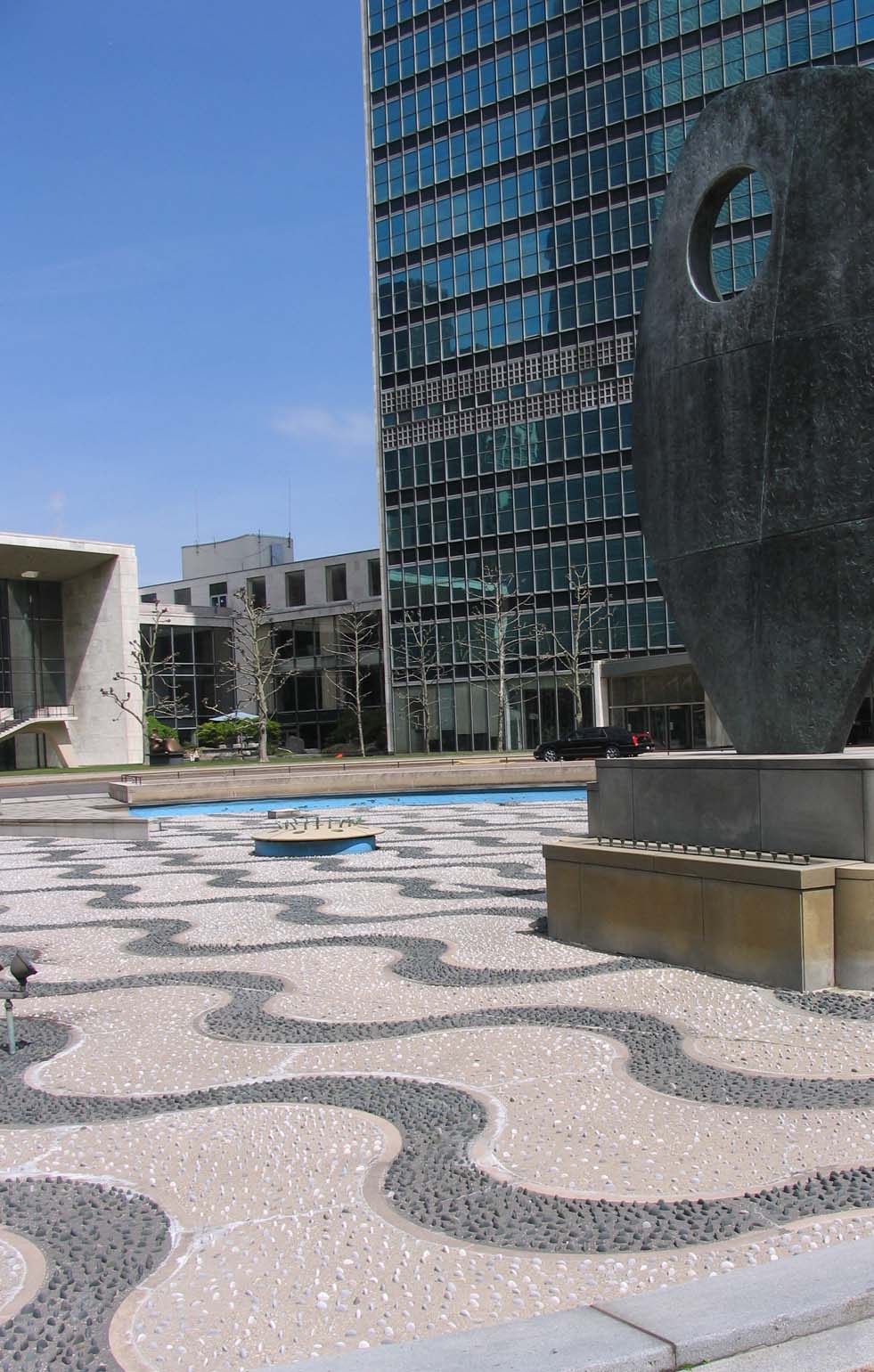
Black Pebbles
In 1952, a fountain was donated to the United Nations from the children of the United States of America. While planning the fountain, the United Nations architects considered using pebbles to pave the bottom of the fountain. It was understood that white pebbles were easy to encounter but black pebbles were not. A friend of the architects had recently visited the Grecian Island of Rhodes and recalled the many black and white pebbles on the shores. The Governor General of the Dodecanese, I. Goerakis, sent a sample of the local rock with the message that the island would be “happy and proud” to provide all the pebbles wanted.
To gather the necessary number of pebbles, local wives of fishermen and their children were put to work collecting them from the shallow waters off the coast of Rhodes in Greece. These women and children worked for a month to gather 760 sacks of the black pebbles, or 45 tons, which were then shipped to the United Nations Headquarters.
In 1998, maintenance for the fountain required and new set of stones and Greece donated the same black pebbles once more, delivering 35 tons.
The fountain dedication was on 26 June 1952, the anniversary of the signing of the United Nations charter at the San Francisco conference of 1945.
Temporarily, coal was used until 25 August 1952 when the pebbles could be installed.
In 1964, the bronze sculpture, titled Single Form, was added to the fountain in memory of the late Secretary-General Dag Hammarskjold.

